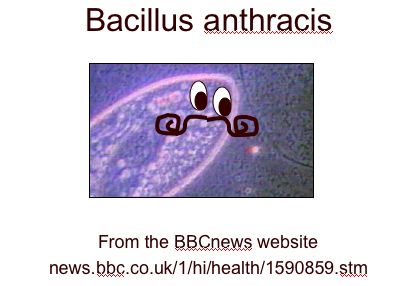 Every life science teacher in my building does some variation of the "Wanted Poster" during our study of microbes. (Feel free to modify my checklist.) Search Google, and you can find many teachers who are using a similar project. Not only does it allow for a little creativity, but a project like this helps dissuade the plagiarism beast.
Every life science teacher in my building does some variation of the "Wanted Poster" during our study of microbes. (Feel free to modify my checklist.) Search Google, and you can find many teachers who are using a similar project. Not only does it allow for a little creativity, but a project like this helps dissuade the plagiarism beast.Media literacy is as big of an issue to tackle as plagiarism, so for this assignment, instead of letting them loose on the Internet, I restrict their search to a list of trusted sites.
With all of these great resources available on diseases, a straight report would be an open invitation for plagiarism. We've all heard our students claim "but, the author wrote it exactly the way I would write it already!" In the old days, plagiarism meant painstakingly copying sentences from an encyclopedia. However, nowadays, "cut-and-paste plagiarism" is much more convenient and prevalent.
I used information from Indiana University and Lisa Hinchliffe to create a PowerPoint to use with my students at the start of this project. At each natural stopping point, I allowed my students to write and share their own paraphrasing of the selections. It was a good discussion and all of the kids said they learned something from the activity.
Does this mean I have never had instances of plagiarism again? Not quite. There will always be those students whose waited well beyond the last minute or who are looking for the "easy A". However, it did cut down tremendously on the amount of "uninformed plagiarists" - those kids who honestly didn't realize what they were doing was wrong.
1 comment:
In this technological age it's happen very often. I think the one good way to overcome this ugly deal - to use plagiarism checking service! In my university teachers use PlagTracker.com - http://www.plagtracker.com/ and we know it. It makes us think us twise before do these!
Post a Comment